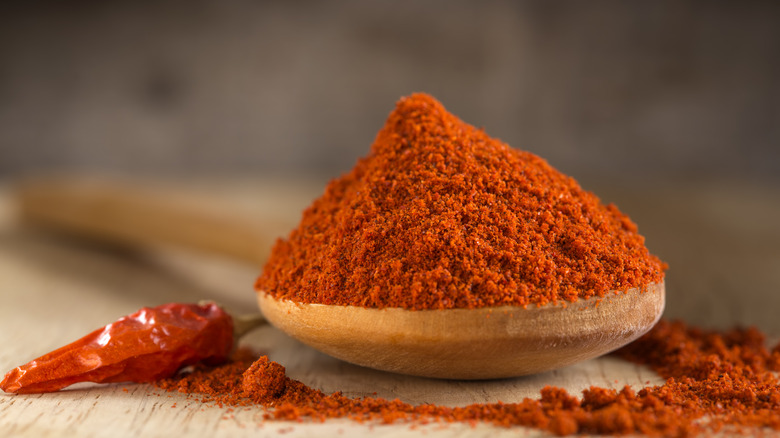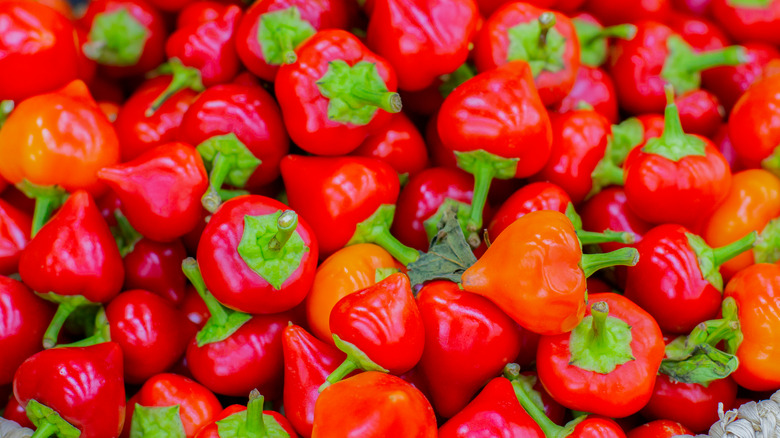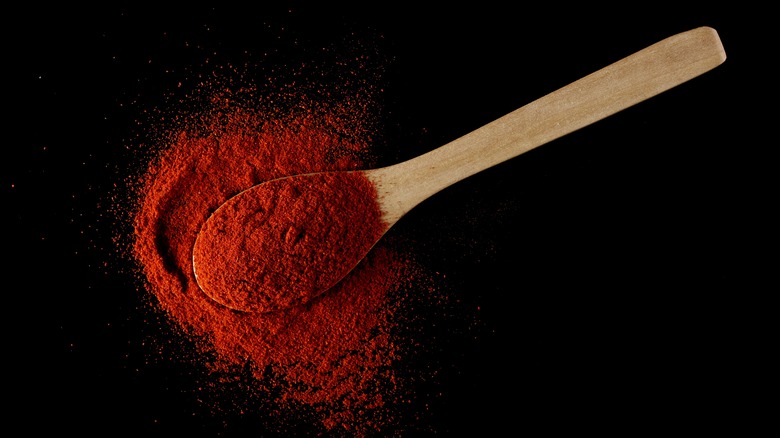The Main Difference Between Paprika And Smoked Paprika
Many of us are familiar with paprika. Whether you sprinkle it across the tops of deviled eggs or use some as part of a dry rub, the spice can be found in many a cook's kitchen. But you may not be as familiar with its richer, more complex cousin: smoked paprika.
Both types of paprika come from peppers in the capsicum annuum family, which includes several varieties ranging from the sweet bell pepper to the spicy jalapeño (per Pepper Geek). However, you won't find that either form of paprika will bring tears to your eyes, unless perhaps you're dealing with the somewhat hotter Hungarian paprika. The pimento peppers used to make paprika have a Scoville rating of only 100 to 500 heat units — very low compared to the heat rating of other, more intense peppers such as habaneros (per Pepper Scale).
Beyond that similar mildness, you can probably pick out the difference between smoked and regular types of paprika fairly quickly. But how can the flavor be so different when both spices come from the same plant? Here's the main difference between regular and smoked paprika.
What's the difference?
If you've ever eaten a piece of pimento loaf or enjoyed pimento-stuffed green olives, then you've already had the pepper used to make paprika. According to the McCormick Science Institute, to make paprika, the pepper's seeds are first removed before it's dried and ground into a fine powder. For regular paprika, the process stops there.
To get the distinctive taste of smoked paprika, the peppers need to be — you guessed it — smoked. For this variety, the peppers slowly roasted over a fire. They are then dried and ground just like regular paprika. The smoking process imparts a deeper taste and a distinct aroma that you won't find in regular paprika. Because of its more delicate flavor, smoked paprika is not a spice you want to allow to simmer or subject to high temperature. As such, Jamie Oliver suggests that you add either type of paprika at the end of the cooking process.
Paprika may help improve your health
The origin of paprika shouldn't surprise you, at least not if you paid attention in history class. That's becuase it was one of the many spices brought back to Europe by explorers and colonizers, who noted how indigenous people used the pepper-derived spice to flavor their food. According to some accounts, Christopher Columbus himself carried the spice with him. Though it hit Europe in the 16th century, paprika's popularity really increased after French chef Georges Escoffier began using it in the mid-19th century (via Pacific Spice Company).
Healthline notes that paprika peppers are high in vitamin A, can improve night vision, reduce cholesterol levels and inflammation, and are loaded with antioxidants. However, if you have a nightshade allergy or sensitivity, you will want to avoid cooking with paprika since peppers are in the nightshade family. If you can manage it, however, paprika can lend a distinctive flavor to many dishes beyond the simple deviled egg.


